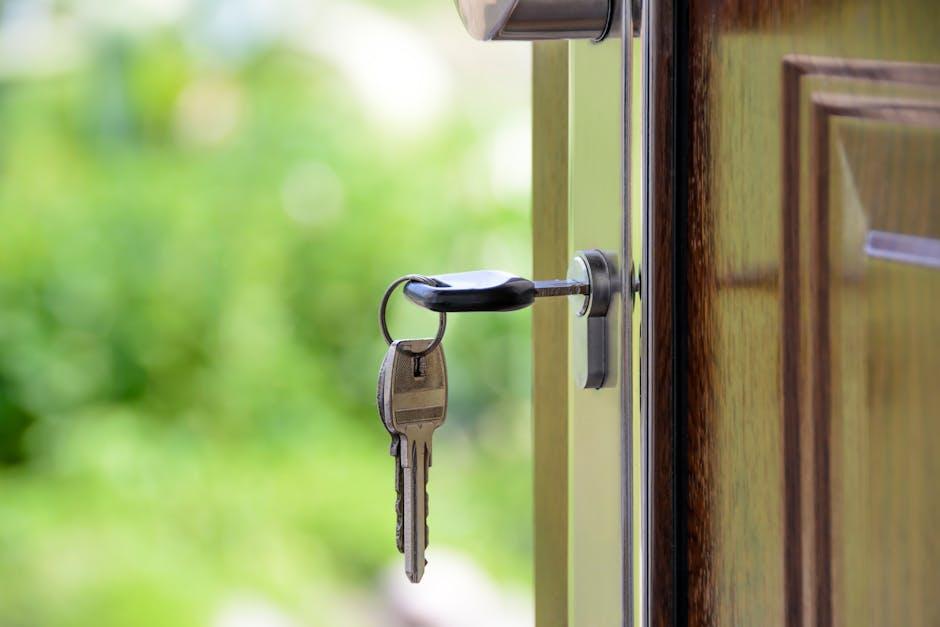In today’s unpredictable world, homeowners are increasingly seeking reassurance that their investments are safeguarded against all potential threats. One pressing concern is whether home insurance policies should unequivocally cover acts of vandalism. As neighborhoods evolve and social dynamics shift, the incidence of property damage through intentional destruction poses a significant risk. This article delves into the complexities surrounding insurance coverage for vandalism, examining the implications for homeowners, insurers, and society at large. By exploring the rationale behind current policy structures and considering the ethical and financial dimensions, we aim to provide a comprehensive understanding of whether automatic coverage for such acts is a prudent course of action.
Understanding the Scope of Home Insurance Policies on Vandalism
When it comes to home insurance policies, the inclusion of coverage for acts of vandalism can vary significantly. Understanding the scope of coverage is essential for homeowners to ensure they are adequately protected against unexpected damage. Typically, most standard home insurance policies do cover vandalism, but there can be exceptions and limitations. Homeowners should be aware of the following potential considerations:
- Policy Limitations: Some insurance policies may have specific clauses that limit or exclude coverage for vandalism under certain circumstances, such as if the property has been vacant for an extended period.
- Deductibles: Homeowners might need to pay a deductible before the insurance coverage kicks in. Understanding how this affects the overall cost of a claim is crucial.
- Claim Process: Filing a claim for vandalism can sometimes require extensive documentation and proof of the incident. Being prepared with police reports and photographic evidence can expedite the process.
- Premium Impact: Frequent claims for vandalism might impact future premiums. Homeowners should consider whether the cost of minor repairs is worth filing a claim.
By comprehensively reviewing their insurance policy and consulting with their insurance provider, homeowners can ensure that they have the right level of protection against vandalism, allowing them to navigate the complexities of insurance claims with confidence.

Analyzing the Financial Implications of Unconditional Vandalism Coverage
When examining the financial implications of including unconditional vandalism coverage in home insurance policies, several factors must be considered. First, insurers may face increased costs due to the unpredictability and frequency of vandalism claims. This could lead to higher premiums for policyholders as companies seek to balance their risk exposure. Moreover, the administrative burden of processing these claims without stringent validation processes might necessitate additional resources, further impacting the insurer’s financial health.
- Increased Premiums: To accommodate the risk of unconditional coverage, insurers might raise premium rates, affecting affordability for homeowners.
- Administrative Costs: Handling claims without thorough scrutiny can increase operational expenses, potentially reducing profitability.
- Risk Management: Insurers need to enhance their risk management strategies to mitigate potential losses, which could include investing in advanced technologies for claim verification.
While unconditional vandalism coverage offers peace of mind to homeowners, the economic impact on the insurance industry is significant. Companies must weigh these financial challenges against the potential benefits of offering such comprehensive coverage, balancing customer satisfaction with fiscal responsibility.

Evaluating Risk Assessment Strategies for Homeowners and Insurers
When it comes to assessing risk in the realm of home insurance, both homeowners and insurers face the challenge of determining the extent of coverage for acts of vandalism. It’s crucial to weigh the potential impact of such events on property and peace of mind. Homeowners should consider the following factors:
- Property Location: Is the home situated in an area with a higher incidence of vandalism? This can affect the likelihood of future claims.
- Security Measures: Have adequate security systems, such as cameras or alarms, been installed to deter potential vandals?
- Historical Claims: Is there a pattern of previous vandalism claims? This can influence an insurer’s decision-making process.
From an insurer’s perspective, evaluating risk involves balancing potential losses with premium affordability. Insurers often conduct comprehensive analyses that include:
- Data Analysis: Utilizing statistical data to forecast vandalism risks and determine coverage terms.
- Policy Adjustments: Tailoring policies to include specific endorsements or exclusions related to vandalism.
- Risk Mitigation: Encouraging homeowners to implement preventive measures through incentives or premium discounts.
Ultimately, the strategy for covering acts of vandalism should be a collaborative effort between homeowners and insurers, aiming to create a fair and sustainable insurance model.

Crafting Comprehensive Recommendations for Policy Enhancements
In the realm of home insurance, the inclusion of vandalism coverage often raises questions and necessitates a thorough examination of policy frameworks. Insurers must evaluate the impact of blanket coverage for vandalism to ensure it aligns with both the financial sustainability of the insurance model and the needs of policyholders. A comprehensive approach involves several critical considerations:
- Risk Assessment: Conduct detailed risk analyses to determine the prevalence and financial impact of vandalism incidents across different regions. This data-driven approach can inform tailored policy adjustments that address specific risk profiles.
- Cost-Benefit Analysis: Balance the costs of covering vandalism without question against potential premium adjustments. Insurers should weigh the benefits of increased customer satisfaction and retention against the financial implications of frequent claims.
- Policy Clarity and Education: Enhance policyholder understanding by clearly outlining what constitutes vandalism and the conditions under which coverage applies. Providing educational resources can reduce confusion and align expectations.
- Fraud Prevention Measures: Implement robust mechanisms to detect and prevent fraudulent claims. This includes advanced verification processes and collaboration with law enforcement to ensure claims are legitimate and justified.
By strategically addressing these elements, insurers can develop policies that offer reliable vandalism coverage while safeguarding their financial interests. This balanced approach ensures that homeowners receive the protection they need without undue burden on the insurance ecosystem.

